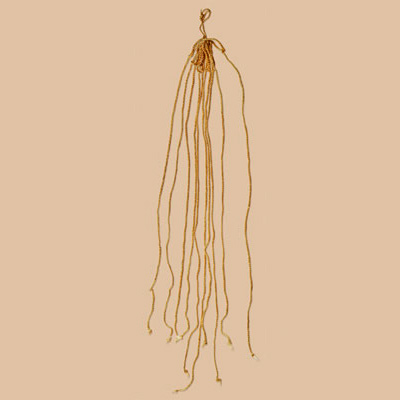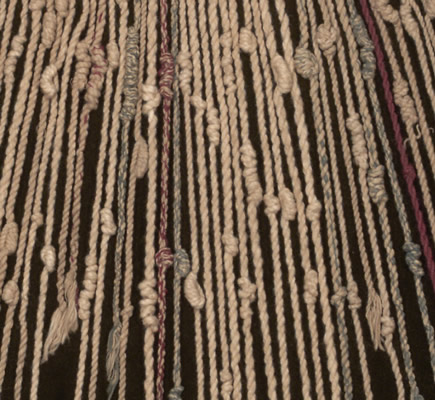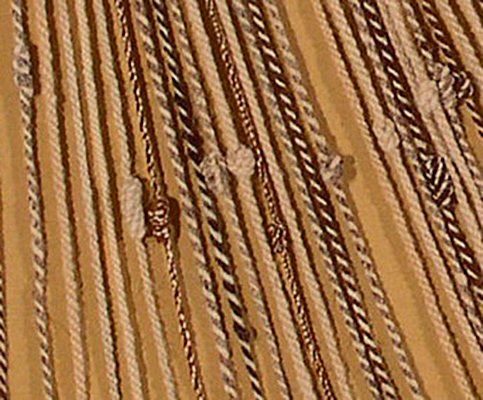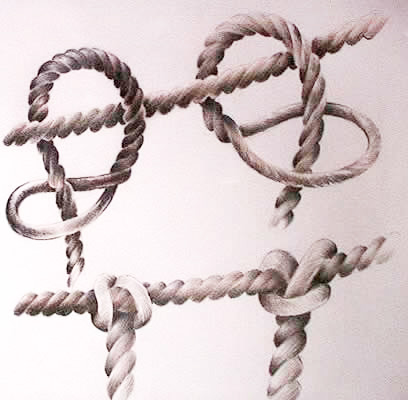Quipu: Counting with knots in the Inka Empire – 2003
- Record-keeping with knots
- The quipu and writing
- Tawantinsuyu , the Inka Empire
- The Quipu, and the needs of an empire
- Quipus and tribute
- Basic parts of a Quipu
- Making a Quipu
- Quipus and numerical values
- Narrative Quipus?
- Los distintos usos del Quipu
- Quipu of Arica
- Quipucamayoc , Lord of the Knots
- Quipus in the colonial era
- Epilogue
- To know more about Quipus
- Crédits and acknowledgements
Making a Quipu
To make the various quipu strings, the quipucamayocs spun the fibers with a portable spindle or with their hands, attaining different kinds of threads depending on the direction of their spinning motion. A rightward (clockwise) motion produced threads running in the same direction as the oblique axis of the letter “S,” and a leftward (counterclockwise) motion oriented the threads in the same direction as the oblique axis of the letter “Z.” To produce a thicker, stronger string, the threads were plied in the opposite direction of that in which they were spun, thereby enabling them to reinforce each another with their natural tendency to unwind. Thus, Z-spun threads were always S-plied into strings, and S-spun threads, always Z-plied into strings. To date, the vast majority of Inka quipus studied for their thread spinning and plying patterns exhibit strings that are Z-spun/S-plied, the same combination characterizing almost all of the Empire’s textile industry. Only a few have all S-spun/Z-plied strings or a combination of both patterns.
Once prepared, the Pendant Strings were attached to the Primary Cord by means of a “half-hitch” knot, which could be oriented in two different ways, enabling the observer to distinguish either the obverse or the reverse side of the knot. A few quipus have been studied that exhibit complex Pendant String attachment patterns.








































